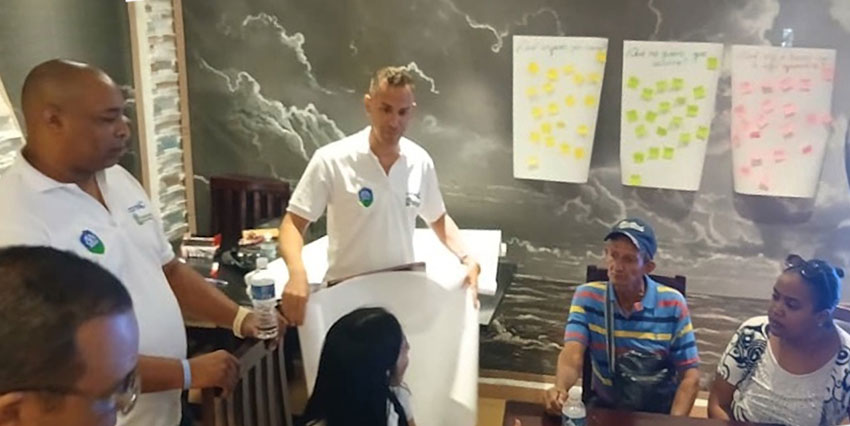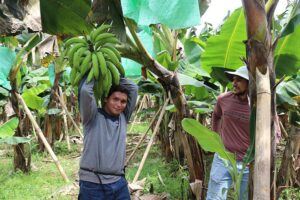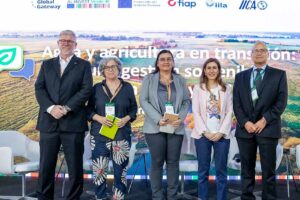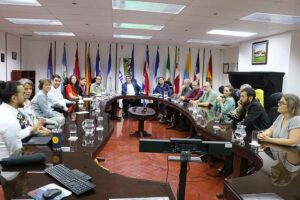CIENPINOS presents greenhouse gas emissions balance sheet for land use and paves the way for new municipal mitigation strategies

- The study confirmed the municipalities of Cumanayagua and Abreus as net emitters of carbon dioxide (CO₂) and highlighted the most significant changes in land use.
Cienfuegos, Cuba. From September 15 to 18, 2025, a workshop was held in the province of Cienfuegos to raise awareness and understanding of greenhouse gas (GHG) emissions estimates from land use from 1994 to 2023 in the municipalities of Abreus and Cumanayagua. The meeting was organized within the framework of the CIENPINOS project and brought together 79 participants, including producers, local authorities, researchers, and specialists from various institutions.
The event, led by CIENPINOS National Director Dr. C. Tania Sánchez Santana, began with a presentation of the results and methodology applied by Mr. C. Raúl Isidrón, who led the study that brought together specialists from the Soil Institute, and was complemented by audiovisual interviews with experts from the Cienfuegos Center for Environmental Studies and the Provincial Meteorology Center, who illustrated the climatic and environmental characteristics of the areas analyzed and the relevance of the studies carried out.
The results in Cumanayagua showed a progressive decrease in cultivated areas, an increase in grasslands due to agricultural abandonment, and a marked growth in forest cover, mainly due to the expansion of the invasive marabou plant (Dichrostachys cinerea). In Abreus, the most significant changes were related to the loss of farmland and the conversion of abandoned land to pasture and marabou. The overall balance in both municipalities confirms their status as net emitters of carbon dioxide (CO₂), the gas with the greatest impact in the national context.
The day included group dynamics led by researchers Dr. C. Dariel de León García and Dr. C. Roberto García Dueñas, aimed at transferring technical results to local planning. These sessions made it possible to identify competencies in climate governance, programs and projects with mitigation potential, and key actors in their implementation, while working with guiding documents such as Municipal Development Strategies and Land Use Plans.
This workshop took place at a key moment for Cuba, following the recent publication in the Official Gazette of the Republic of Resolution 106 of the Ministry of Science, Technology, and Environment (CITMA), which establishes the regulations for carbon market activities. This legal norm creates the basis for the country to participate in global emissions trading mechanisms, with access to financial and technological incentives linked to GHG reduction.
Within this framework, CIENPINOS provides scientific evidence and quality data to support decision-making in territorial climate governance, strengthening the capacity of municipalities to align themselves with new national and global mitigation mechanisms.
The next workshop will be held in the province of Pinar del Río, specifically in the municipality of Viñales, in early November 2025, extending the experience to other territories prioritized by the CIENPINOS project.
The CIENPINOS project is implemented by CATIE's (Tropical Agricultural Research and Higher Education Center) Agroforestry and Genetic Improvement of Coffee and Cocoa Unit (UAMCC) and the Indio Hatuey Pasture and Forage Experimental Station (EEPFIH), with funding from the Swedish International Development Cooperation Agency (SIDA). Its objective is to contribute to the creation of the necessary capacities for municipal climate management and the management of sustainable, low-emission, climate-resilient agroforestry systems that conserve biodiversity in the municipal governments of Cumanayagua, Abreus, Viñales, and La Palma.
More information:
Ismael Hernández Venereo
International Coordinator
CIENPINOS Project
ismael.hernandez@catie.ac.cr
Written by::
Raúl Isidrón Pichs
Journalist and Communicator
CIENPINOS Project consultant
raul.isidron@73gmail.com



